In this guide, we will explore the best fruit trees to grow in North Carolina, focusing on their suitability, care, and the delightful fruits they yield.
Apple Trees
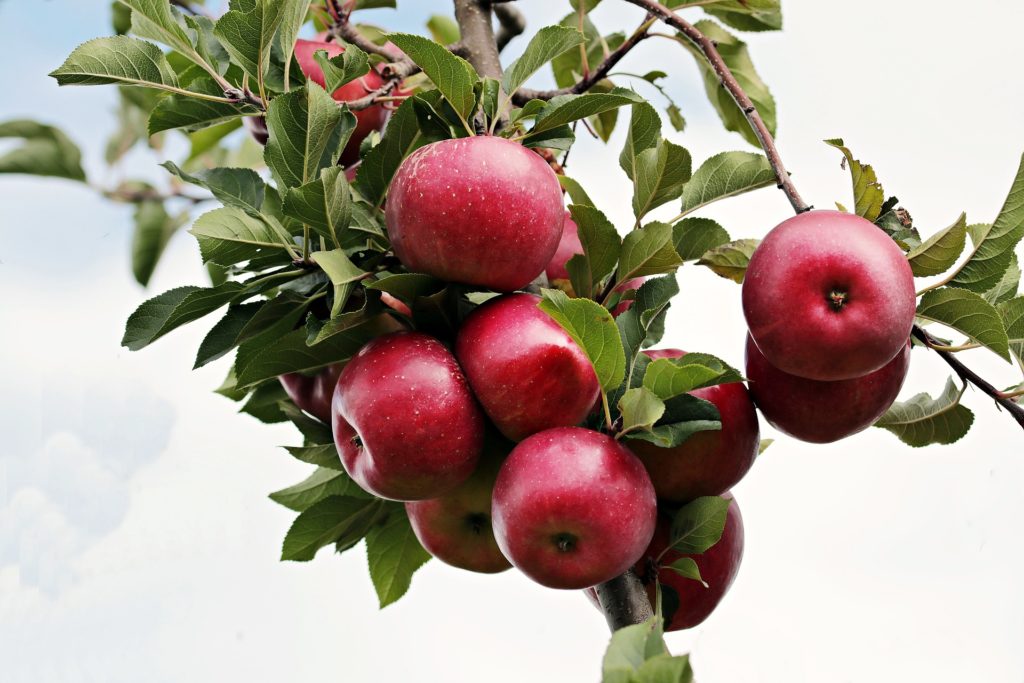
Apple trees are among the most popular fruit trees in North Carolina, particularly in the higher elevations of the western part of the state. Varieties like ‘Granny Smith,’ ‘Fuji,’ and ‘Golden Delicious’ thrive in the cooler regions, while ‘Red Delicious’ and ‘Gala’ can be grown successfully throughout the state.
The key to a successful apple tree harvest lies in proper pollination. Most apple varieties require cross-pollination, so it’s beneficial to plant multiple varieties in your garden. Apple trees prefer well-drained, loamy soil and full sun exposure, ensuring that they receive at least six to eight hours of sunlight daily. Regular pruning is essential to maintain tree health and productivity, as it helps to remove dead or diseased branches and encourages better air circulation.
Peach Trees
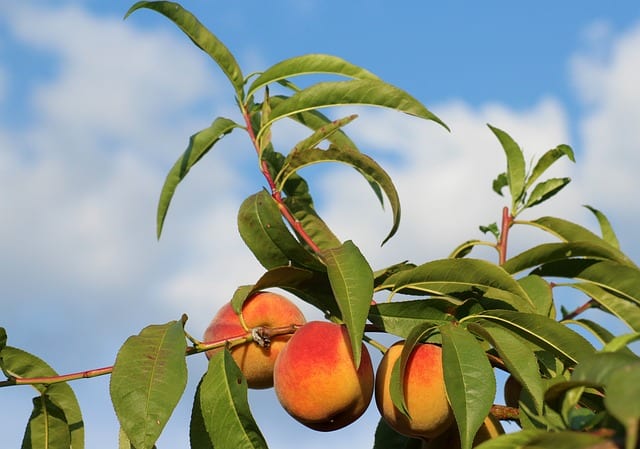
Known for their sweet and juicy fruits, peach trees flourish in North Carolina’s warm climate. The state’s eastern and central regions are particularly well-suited for varieties such as ‘Elberta,’ ‘Belle of Georgia,’ and ‘Redhaven.’ These peaches thrive with plenty of sunlight, requiring full sun exposure to produce the sweetest and most flavorful fruits.
Peach trees prefer sandy or loamy soil with good drainage. While they are relatively hardy, they benefit from regular watering during dry spells, especially in the fruit-setting phase. It’s essential to monitor for pests such as the peach tree borer, and consistent pruning helps maintain tree shape, promote air circulation, and remove dead wood.
Pear Trees
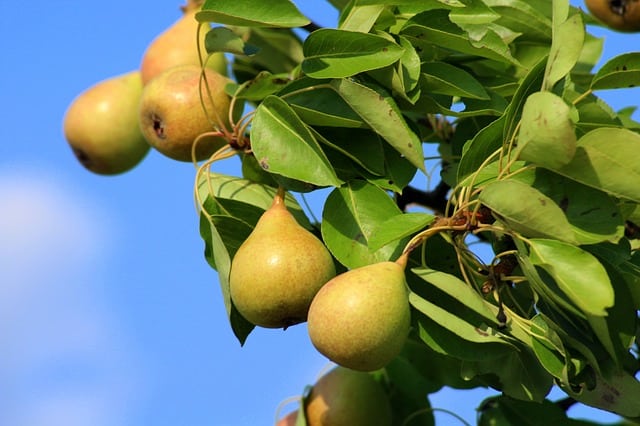
Pear trees are another excellent option for North Carolina homeowners, with varieties like ‘Bartlett,’ ‘Bosc,’ and ‘Kieffer’ adapting well to the state’s climate. These trees are known for their resilience and can thrive in a range of soil types, although they prefer well-drained soil and full sun.
One of the significant benefits of growing pear trees is their ability to produce delicious fruits with relatively low maintenance. They are less susceptible to pests than other fruit trees, making them a favorite among gardeners. Cross-pollination is also necessary for optimal fruit production, so plant different varieties together to enhance yield. Pears typically require pruning in late winter to maintain their shape and encourage healthy growth.
Plum Trees
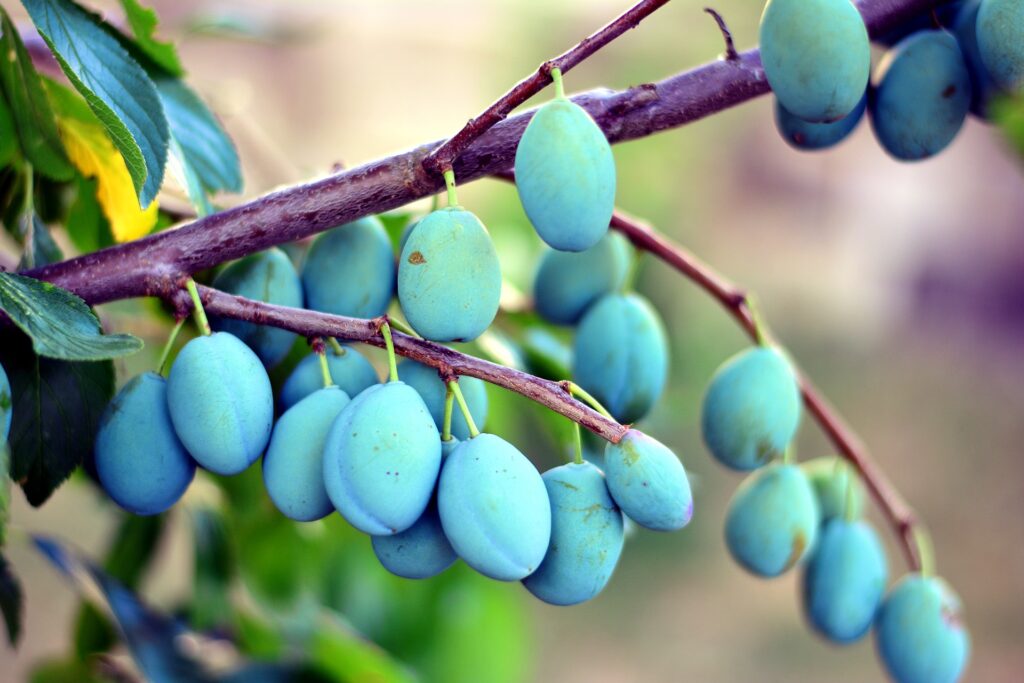
Plum trees add not only a delicious fruit to North Carolina gardens but also a beautiful ornamental aspect with their showy blossoms in spring. Varieties like ‘Stanley,’ ‘Methley,’ and ‘Shiro’ are recommended for this region. These trees thrive in the warmer areas of the state and need full sun and well-drained soil to flourish.
Plum trees can adapt to different soil types, but sandy or loamy soils are ideal. They typically require less water once established, but regular monitoring is essential, especially during dry spells. It’s important to be aware of pests such as aphids, which can affect plum production. Regular pruning helps shape the tree and encourages more light to penetrate the canopy, ultimately leading to better fruit production.
Cherry Trees

Cherry trees are adored for their stunning blossoms and delectable fruits. In North Carolina, tart cherry varieties like ‘Montmorency’ and sweet cherries like ‘Bing’ can be grown successfully, especially in the western mountainous regions. These trees require a cold period, making the state’s cooler areas a great choice for cultivation.
Cherry trees prefer loamy, well-drained soil and full sunlight to thrive. They benefit significantly from cross-pollination, so planting multiple varieties ensures a more fruitful harvest. It’s important to be vigilant regarding pests like cherry fruit flies, which may compromise fruit quality. Regular pruning helps manage tree size, improve air circulation, and enhance overall health.
Fig Trees

Figs are exotic and nutritious fruits that adapt wonderfully to North Carolina’s climate, particularly in the warmer eastern parts of the state. Popular varieties include ‘Brown Turkey,’ ‘Celeste,’ and ‘Peter’s Honey.’ Fig trees thrive in full sun and well-drained soil, making them relatively low-maintenance once established.
These trees are relatively drought-tolerant but will produce sweeter fruit with consistent watering. They are usually pest-resistant, although you may encounter fruit flies and leaf-spot diseases. Pruning is not as essential with figs, but maintaining a tidy shape helps promote a larger yield. A well-treated fig tree can produce an abundant crop that enhances both gardens and kitchen tables.
Persimmon Trees
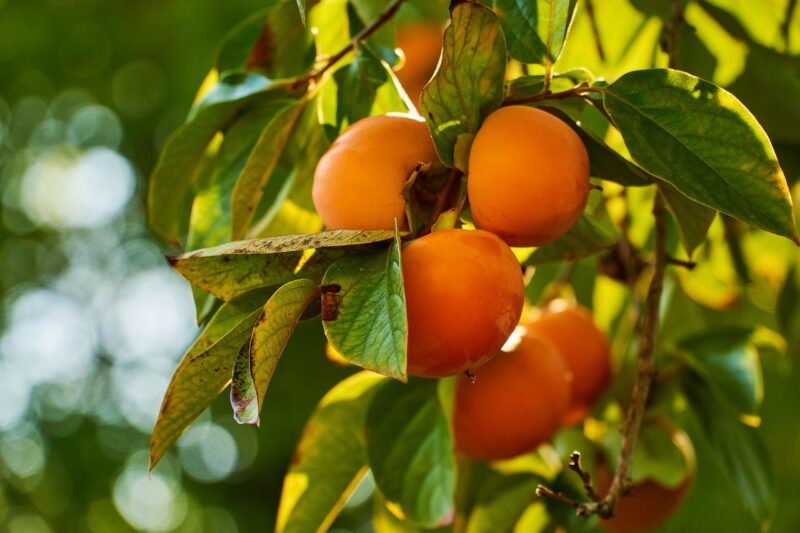
Persimmons are a delightful addition to any North Carolina garden. Both the native American persimmon (Diospyros virginiana) and the Asian persimmon (Diospyros kaki) can be successfully grown in the state. These trees are particularly well-suited to the southeastern and piedmont regions, where they can enjoy hot summers and mild winters.
Persimmons prefer well-drained soil and can tolerate a range of soil types, including sandy and clay soils. They thrive in full sun but can also grow in partial shade. These trees are remarkably self-sufficient; most varieties do not require cross-pollination to bear fruit, making them an excellent choice for smaller gardens. Minimal pruning is needed, primarily to remove dead or damaged branches and to shape the tree.
Pomegranate
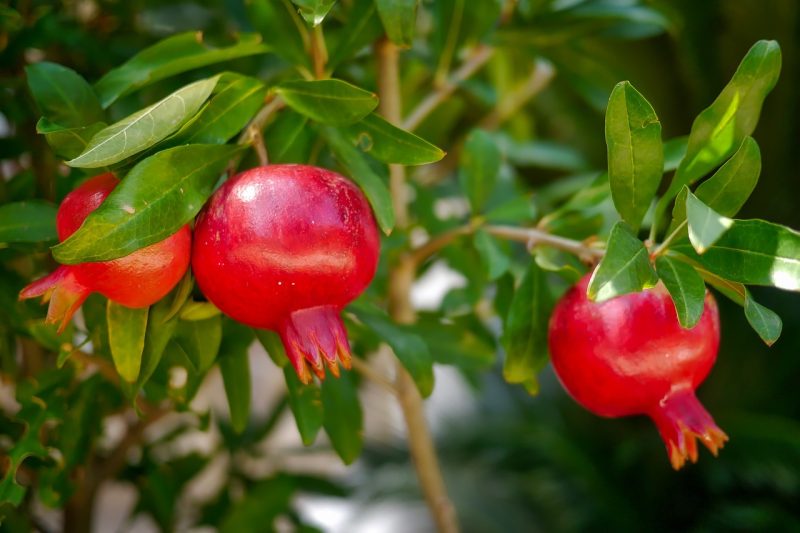
Although slightly less common, pomegranates thrive in North Carolina’s warmer areas, particularly in the sandier soils of the coastal plains. Varieties such as ‘Wonderful’ and ‘Angel Red’ can be planted, offering vibrant red fruits packed with antioxidants.
These trees require full sun and well-drained soils, making them well-suited to drier conditions after the establishment phase. Regular watering is beneficial during dry spells, especially as the fruit begins to set. Pruning is often necessary to maintain size as well as to promote good air circulation, which can help prevent disease. Pomegranates are resilient, drought-tolerant once established, and yield fruits that are not only delicious but also easy to harvest.
Blueberries
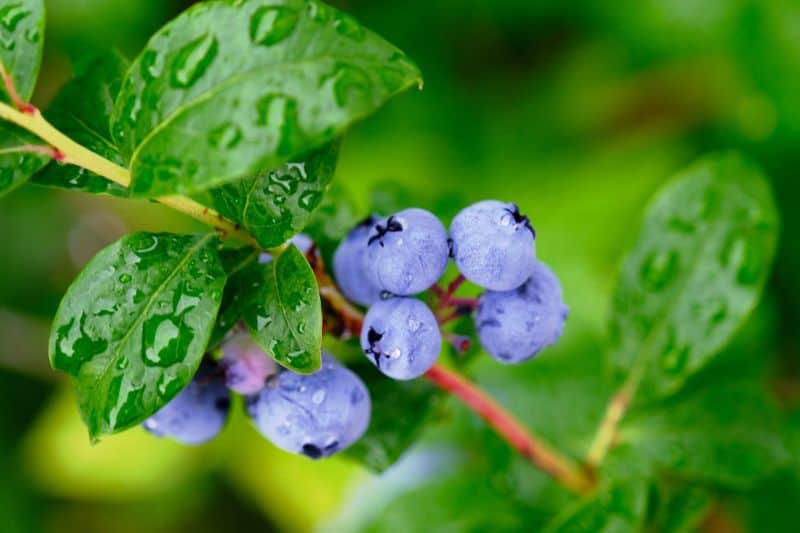
While not technically trees, blueberry bushes are essential in any North Carolina fruit garden. They thrive particularly well in the state’s acidic soils, making them ideal for cultivation. Highbush varieties like ‘Bluecrop,’ ‘Climax,’ and ‘Tifblue’ are well-liked among local gardeners.
Blueberries require full sunshine and acidic soil (pH 4.5-5.5) to flourish. Consistent, ample watering is crucial, especially during the fruit development stage. These bushes typically need minimal pruning in the first few years, though established plants benefit from trimming to promote healthy growth and fruit production. The sweet berries not only serve as a delightful treat straight from the bush but are also versatile for use in various recipes.
Mulberry Trees
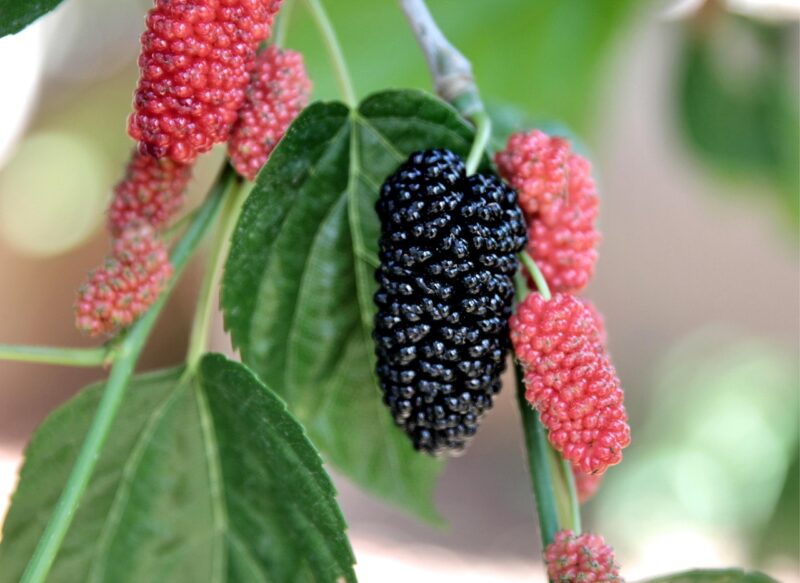
Mulberry trees are often an overlooked gem in North Carolina gardens. They thrive across the state and are known for their abundant fruits that resemble blackberries. Varieties like ‘Illinois Everbearing’ and ‘Red Mulberry’ produce sweet, tart berries that can be enjoyed fresh, dried, or made into jams and jellies.
These trees prefer full sun to partial shade and adapt well to various soil types, though they thrive in well-drained conditions. Mulberry trees are relatively low-maintenance and can tolerate drought conditions once established. Some varieties may be messy due to fallen fruit, so consideration of planting location is essential. Their quick growth and fruit production make them a rewarding choice for home gardeners.
Pawpaw Trees
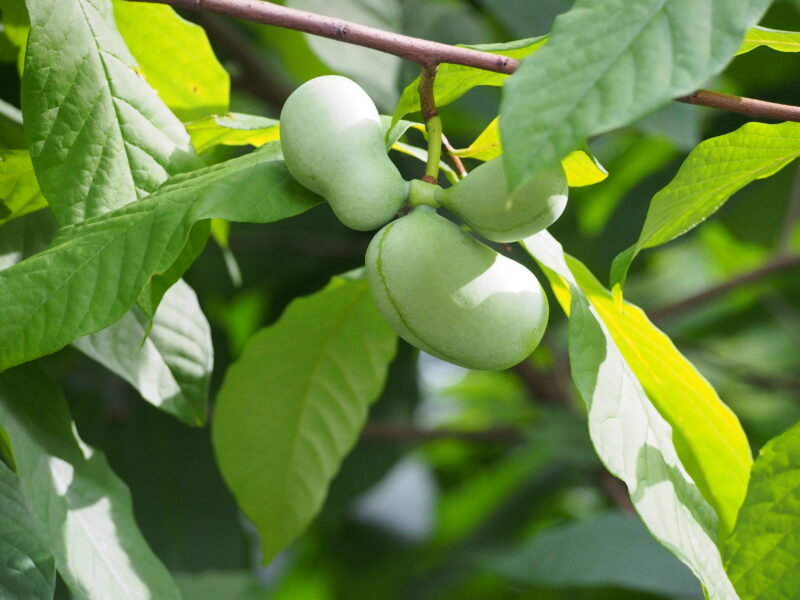
Pawpaw trees are the largest edible fruit trees native to North America, and they flourish in the rich, moist soils found in North Carolina. Known for their custard-like texture and flavors reminiscent of bananas and mangos, pawpaws can become a unique addition to your garden. They thrive in shaded or partially shaded areas, making them suitable for planting under taller trees.
Pawpaws do require pollinators, so plant them in groups to ensure fruit set. While they’re relatively easy to care for, they prefer moist, well-drained soil. Regular watering is crucial for young trees, and as they mature, they can tolerate short periods of dryness. Minimal pruning is necessary, focusing mainly on shaping and removing dead branches.
Jujube
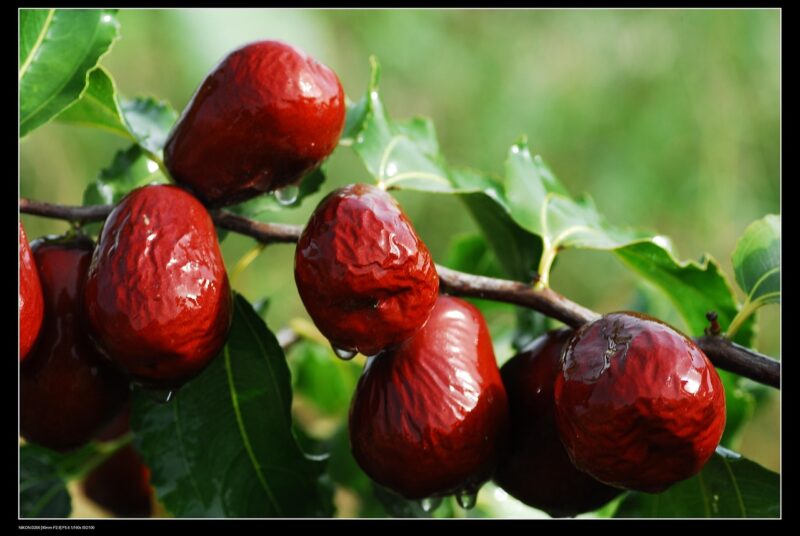
The jujube tree, also known as the Chinese date, is gaining popularity as a fruit-bearing tree in North Carolina. Adapting well to the state’s varying climates, jujubes produce small, sweet fruits that are rich in nutrients. Varieties like ‘Lang’ and ‘Li’ are particularly suited for the area.
Jujube trees thrive in full sun and prefer well-drained soils. One of their most appealing features is their exceptional drought tolerance, making them an excellent choice for low-maintenance gardening. While they typically require little pruning, regular maintenance to shape the tree can enhance air circulation and promote fruit yield.
Kiwi Vines
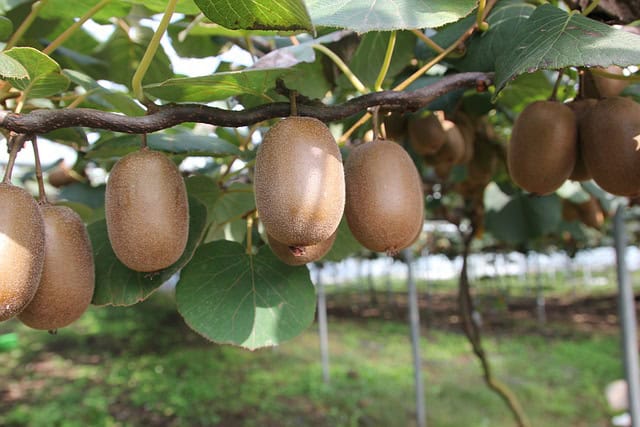
Kiwi vines, though not a tree, can be an extraordinary addition to your North Carolina garden. Hardy kiwis like ‘Anna’ and ‘Hardy’ can thrive in the state’s milder temperatures. These vines enjoy full sun and well-drained, fertile soil.
Although they require a sturdy trellis or support structure for growth, kiwi vines are rewarding with their vibrant green foliage and delicious fruits. They need moderate watering, particularly during fruit set, and regular trimming is key to maintaining manageable growth and promoting greater fruit yield. With the right care, you can enjoy homegrown kiwis right from your backyard.





